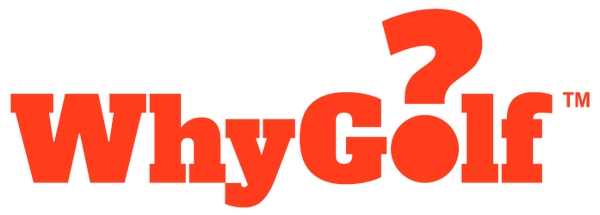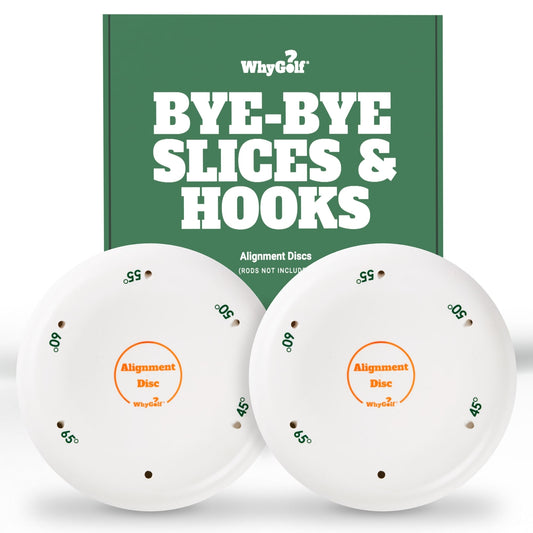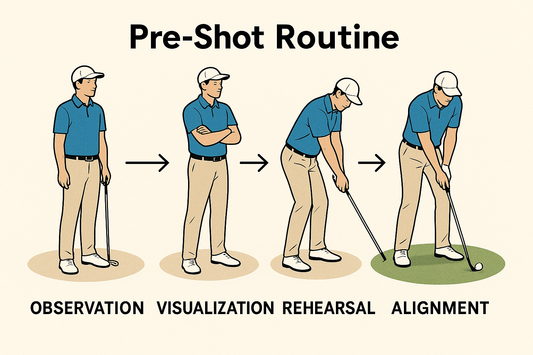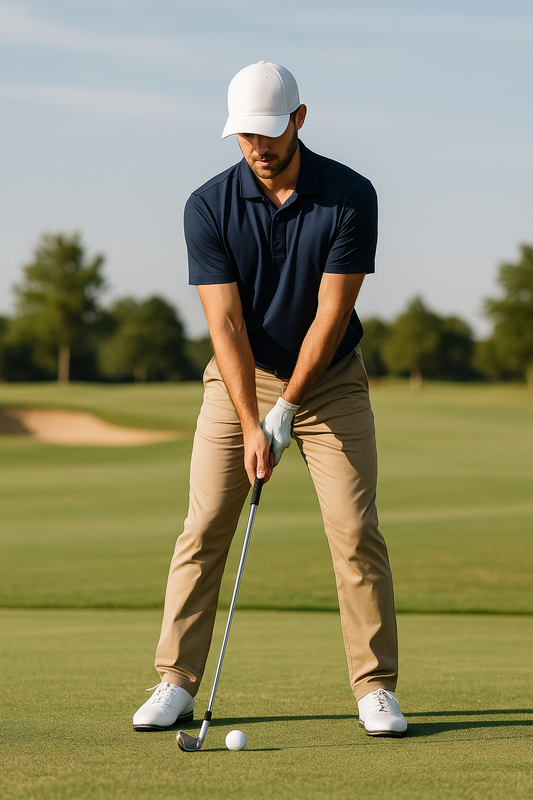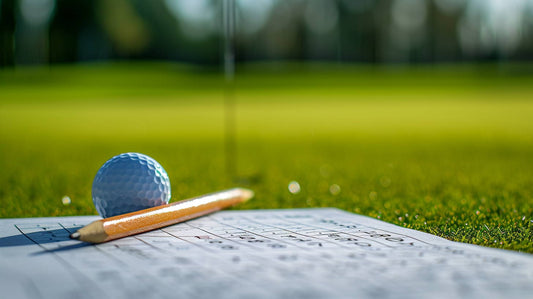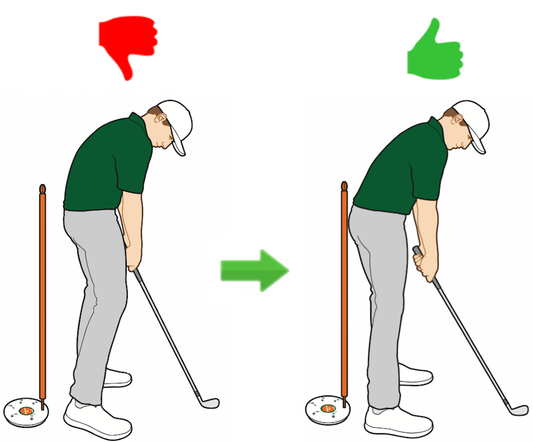Author: WhyGolf WhysGuy
We want to preface this guide with the acknowledgment that neither WhysGuy nor anyone from the WhyGolf team claims to know everything about the golf swing. We don’t want anyone to treat what we say here as gospel. While much of what we’ll say is a reflection of decades of dialogue with PGA instructors and players, we’re always learning and we understand that knowledge about the sport of golf will continue to evolve over time.
In this post, WhysGuy will cover:
- Why it's important to have the ability to hit a draw in golf.
- Practical swing adjustments you can make to start hitting draws.
- How the WhyGolf Alignment Discs can help you learn how to hit a draw in golf.
Why is it Important to Know How to Hit a Draw in Golf?
Aside from the fact that draws are aesthetically pleasing, draws can provide many benefits to your golf game.
Key Benefits to Draws in Golf:
1. Draws penetrate the wind much better than fades (draws make the ball spin less).
2. Draws generally go farther than fades. Due to less spin, draws typically roll out more than fades.
3. Draws will help you attack tucked-left pins safely (right pins for left-handers). Instead of having to aim directly at a left pin, you'll be able to aim towards the center of the green and use draw spin to get closer to the hole.
Before we dive into swing tips, it's worth taking a moment to discuss the impact conditions required for a draw.
So, What is a Draw in Golf?
For a right-handed player, a draw is an airborne golf ball that ideally starts to the right of our target and curves back to our target. If you haven’t already, we highly recommend reviewing our post on the Ball Flight Laws for a refresher on the 9 ball flights and how to hit them.
Put simply, the club's face angle at impact primarily determines your ball's starting direction and the resulting curve reflects the difference between your clubface angle and swing path at impact.
How to hit a draw (for right-handers):
- The club’s face angle at impact must be aimed to the right of the target (so the ball starts to right of the target).
- Swing path needs to be slightly right of face angle at impact, which will produce draw spin.
How to Hit a Draw in Golf
1. Aim Right with Feet and Shoulders
- Since you'll need your swing path to the right (for right-handers) of the target at impact, we recommend that you align your feet and shoulders to the right of your target at setup.
- Your swing path will naturally follow the direction in which your body aims - aim right, swing right.
2. Move Ball Position Back Slightly
- When you move the ball back in your stance, your swing path will naturally come more from the inside, which will help you hit a draw.
- Ball position is one of the most overlooked elements of a sound golf swing. Play around with it! You'll find it's much easier to hit a draw with the ball in the middle of your stance as opposed to off your front heel.
4. Learn A Draw Swing Path with the Alignment Disc
- With the Alignment Disc, you can place alignment rods at specific angles to facilitate a swing and shot shape of your choosing.
- For many golfers, practicing with a reference point enables them to better feel where the clubhead is and should be throughout the swing.
- See the adjacent illustration for a visual.
How to Hit a Draw with the Alignment Disc
- Set the Alignment Disc about a club-length from the ball and a foot outside the target line (see picture).
- You should feel forced to swing under the rod, which will facilitate an in-to-out swing path.
- If you hit shots in this position and your ball isn't drawing, move the Alignment Disc closer to the target line. This will move your swing path even farther in-to-out.
- Repeat for a few shots until you get the feel for hitting draws, then see if you can apply that feeling to shots without your discs.
How to Hit a Draw in Golf - Key Takeaways:
- A draw in golf happens when your club's face angle is slightly closed to your swing path at impact.
- To learn how to hit a draw in golf, we recommend adjusting your setup and ball position before making further changes to your golf swing.
- The WhyGolf Alignment Disc can be a useful tool to help learn how to hit a draw in golf.
Ready to learn how to hit a draw in golf? Learn more about how the Alignment Disc can help you with your swing plane here.
What are golf's Ball Flight Laws?
Ball Flight Laws explain the 9 ball flights in golf and the impact conditions necessary to hit each of the ball flights. The ball flight laws are critical to understand if you're looking to learn how to hit a draw.
How do I hit a draw in golf?
To learn how to hit a draw in golf that ends up at your target, you want your clubface angle to be slightly right (for right-handers) of your target at impact. Your swing path needs to be slightly to the right of your club face angle at impact. Learning how to hit a draw is a matter of practice, and anyone can accomplish it with the right tools and instruction.
How do I hit a hook in golf?
To hit a hook that ends up at your target, you want your clubface to be aimed where you want the ball to start (likely to the right of your target). To make the ball curve significantly to the left, you will need your swing path to be much farther right of your face angle at impact. You can accomplish this by aiming well to the right with your shoulders and feet.
What's the best way to learn how to hit a draw?
To learn how to hit a draw in golf, there are a few tips you should keep in mind. First, it's critical you understand the impact conditions necessary to produce a draw. These are outlined in the above article. You'll need a clubface that is closed to your swing path at impact. You can practice this by imagine hitting a tennis forehand. This will get you started in learning how to hit a draw. Consider aiming your feet and shoulders right of the target at setup (for right-handers) and feeling like your swing path goes to the right in your swing. If you're having trouble doing this, consider using our Alignment Disc and Padded Alignment Rods to feel this. Once you get the hang of it, you can start hitting longer and longer clubs. Pretty soon, you'll be hitting high, bomb draws with driver! Above all, remember to practice consistently and be patient with yourself as you develop the ability to hit a draw.
What is a draw in golf?
A draw in golf is a ball flight that curves gently from right to left for a right-handed golfer (and from left to right for a left-handed golfer). This type of shot is useful because it typically results in a longer, more penetrating ball flight compared to a straight shot or a fade. The draw occurs when the clubface is slightly closed relative to the swing path at impact, creating sidespin that causes the ball to curve.
How much does clubface angle at impact affect the ball's starting direction?
For full shots, club face direction at impact is responsible for 75-95% of the ball's initial starting direction.
However, as we move closer to the green, club path angle becomes more and more responsible for your ball's initial starting direction. In bunkers, for example, your club path is responsible for most of your ball's starting direction since the club usually doesn't make direct contact with the golf ball (sand pushes the ball out of the bunker).
Is a draw or fade better in golf?
Draws and fades both have their own benefits and drawbacks. There are times on the course where a draw will make more sense than a fade and vice-versa. If you're interested, check out our post on Draws vs. Fades where we compare and contrast the two ball flights. In short, draws will generally travel farther than fades but can be more difficult to control for some golfers.
How do I learn how to hit a draw with the Alignment Disc?
To hit a draw, start by positioning the Alignment Disc on the ground about a clublength from your ball and half a clublength outside your target line (video below). You'll want to ensure your clubface slightly to the right of your target and your body slightly to the left. Remember to focus on swinging with an inside-out motion so your path is in-to-out to your clubface angle at impact. Practice this technique at the driving range, focusing on your alignment and swing path. Start with shorter clubs and gradually work your way up to the driver. Try to maintain a smooth, fluid swing and avoid overcompensating by swinging too far to the left. Additionally, it's worth considering working with a golf instructor who can provide you with advice and drills to help you learn how to hit a draw. In time, you'll be hitting draws with ease!
Why is it important to know how to hit a draw in golf?
Learning how to hit a draw in golf is crucial to improving your game. Hitting a draw can add distance to your drives and help you better control your ball flights. You'll be able to cheat the wind with your penetrating draws. Additionally, learning how to hit a draw proficiently will help you escape trouble out on the golf course when you play. It's important to remember that improving at golf can take time and will require patience. Hitting draws is one of the most enjoyable parts of the game and we hope you take the time to do so!
Can anyone learn how to hit a draw in golf?
Yes, anyone can learn how to hit a draw. To hit a draw, you'll need the right tools and instruction. You can do yourself a favor by using alignment sticks to emphasize your in-to-out swing path, as this is critical to get the ball curving from right to left (for right-handed golfers). Start by aligning your body slightly to the right of the target and placing your hands on the club. During your swing, aim to swing the club from inside the target line to outside, while keeping your clubface slightly closed of your swing path at impact. Practice this technique consistently until you start seeing the ball curve from right to left. Remember that hitting a draw takes practice and patience, so keep at it until you master the technique.
Check Out Our YouTube Channel For Drills and Tips

